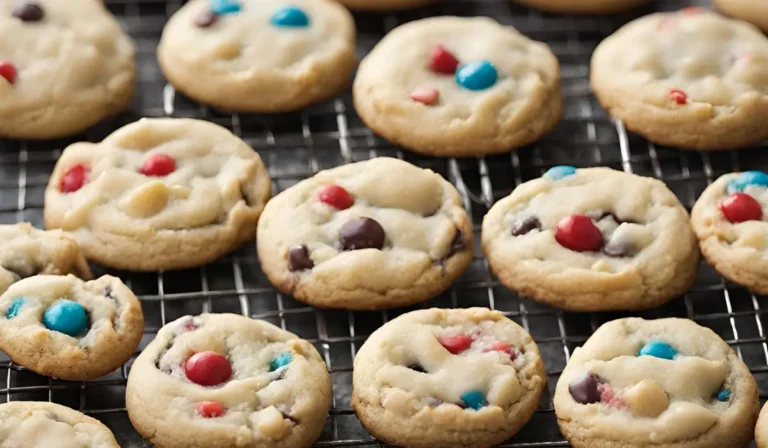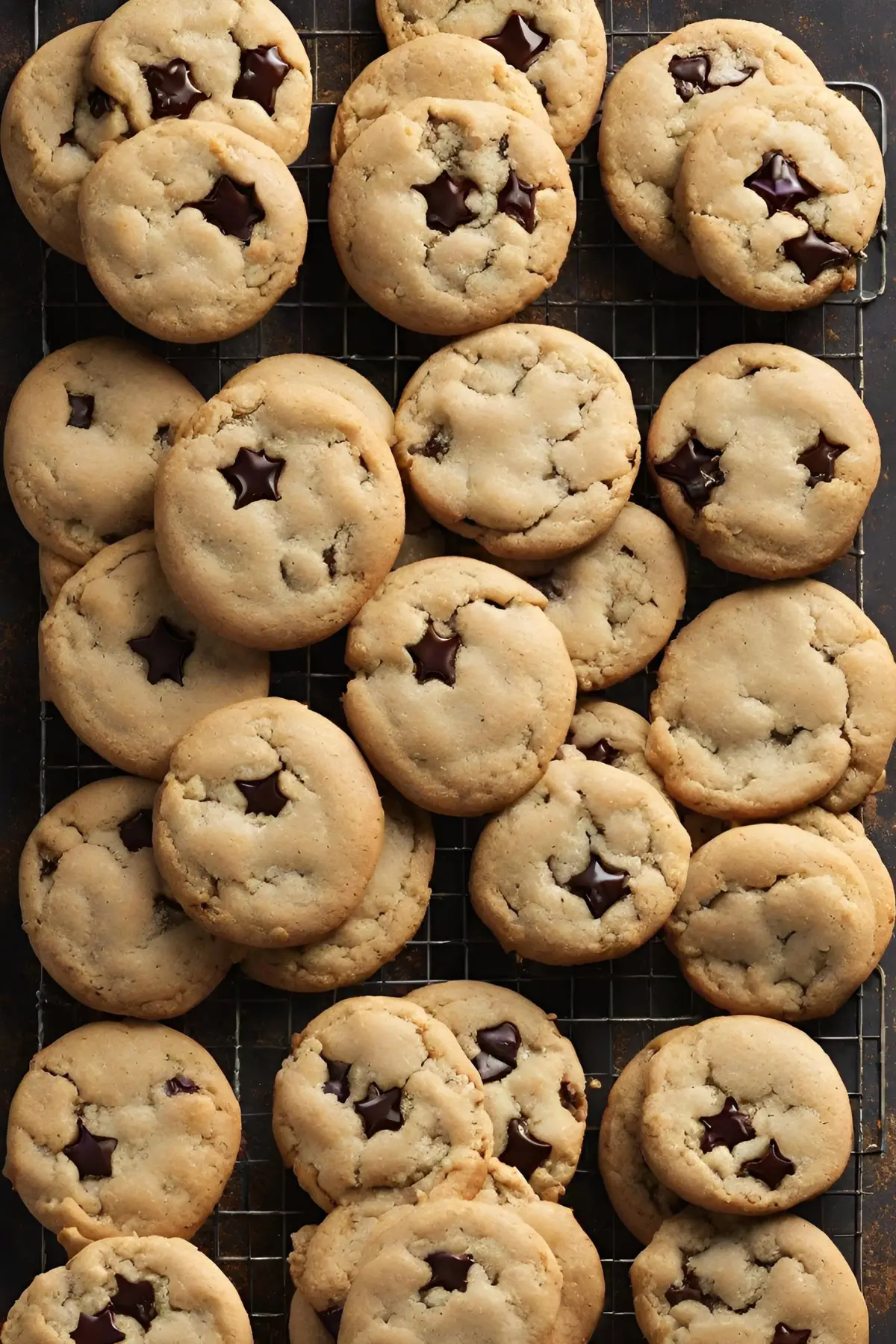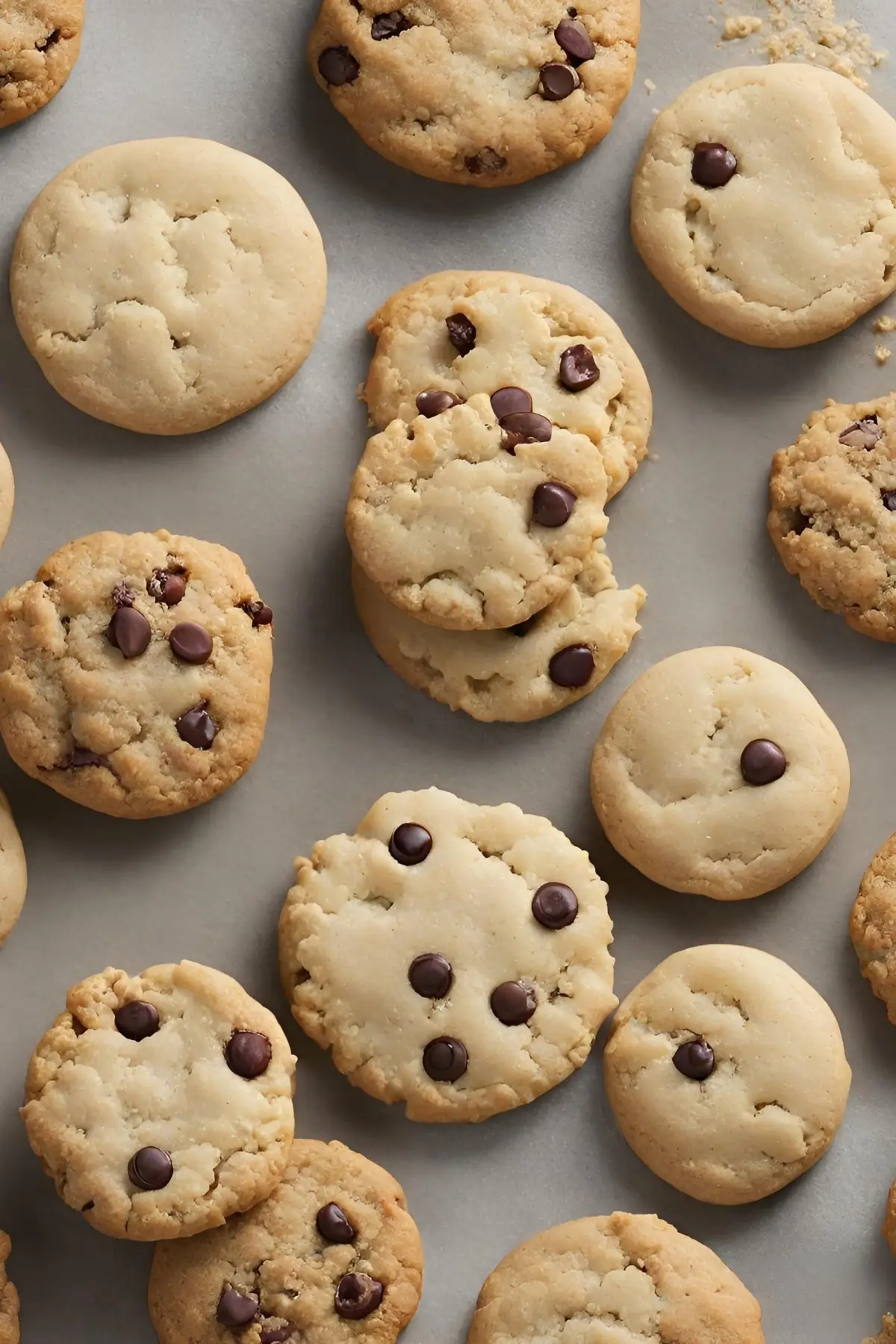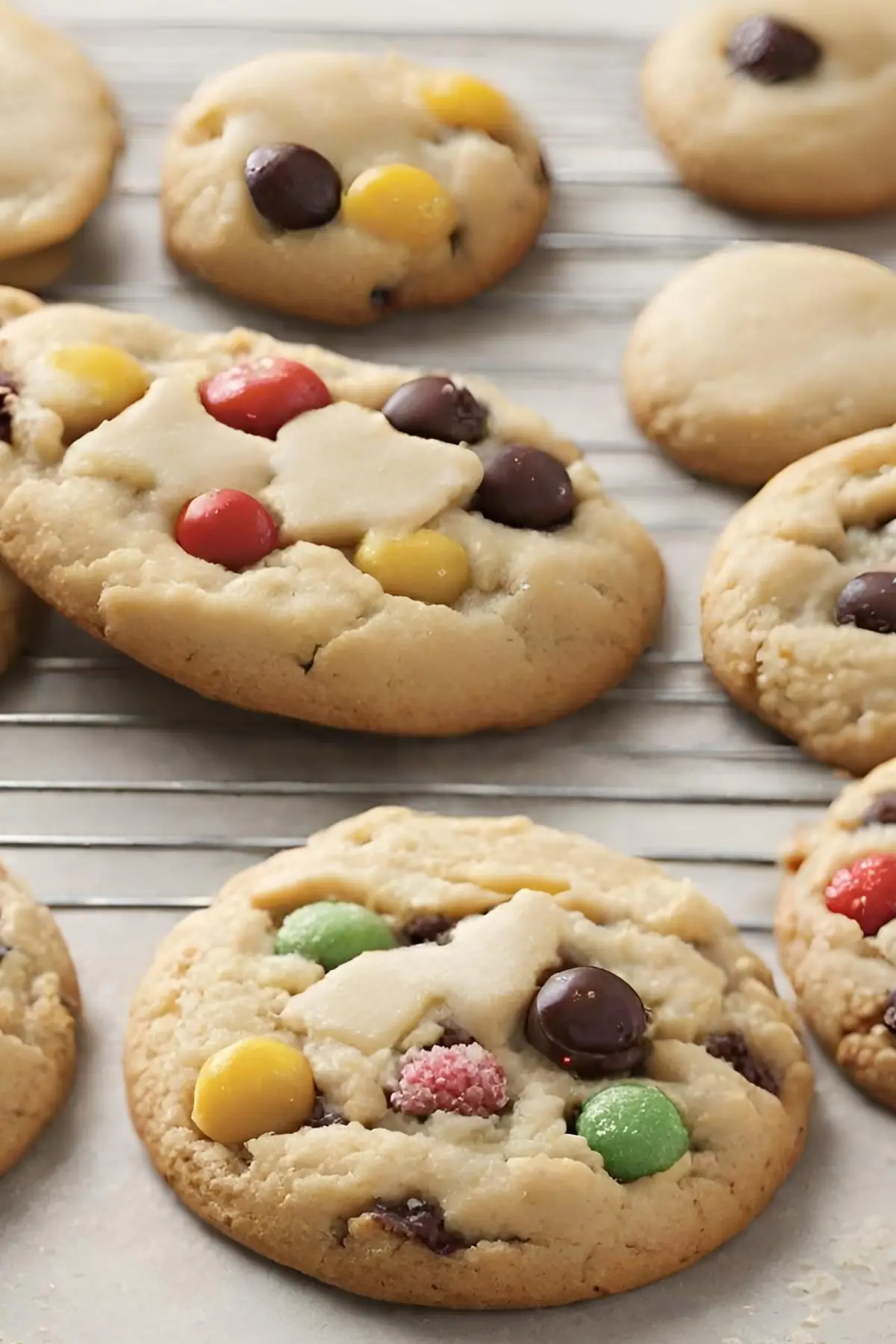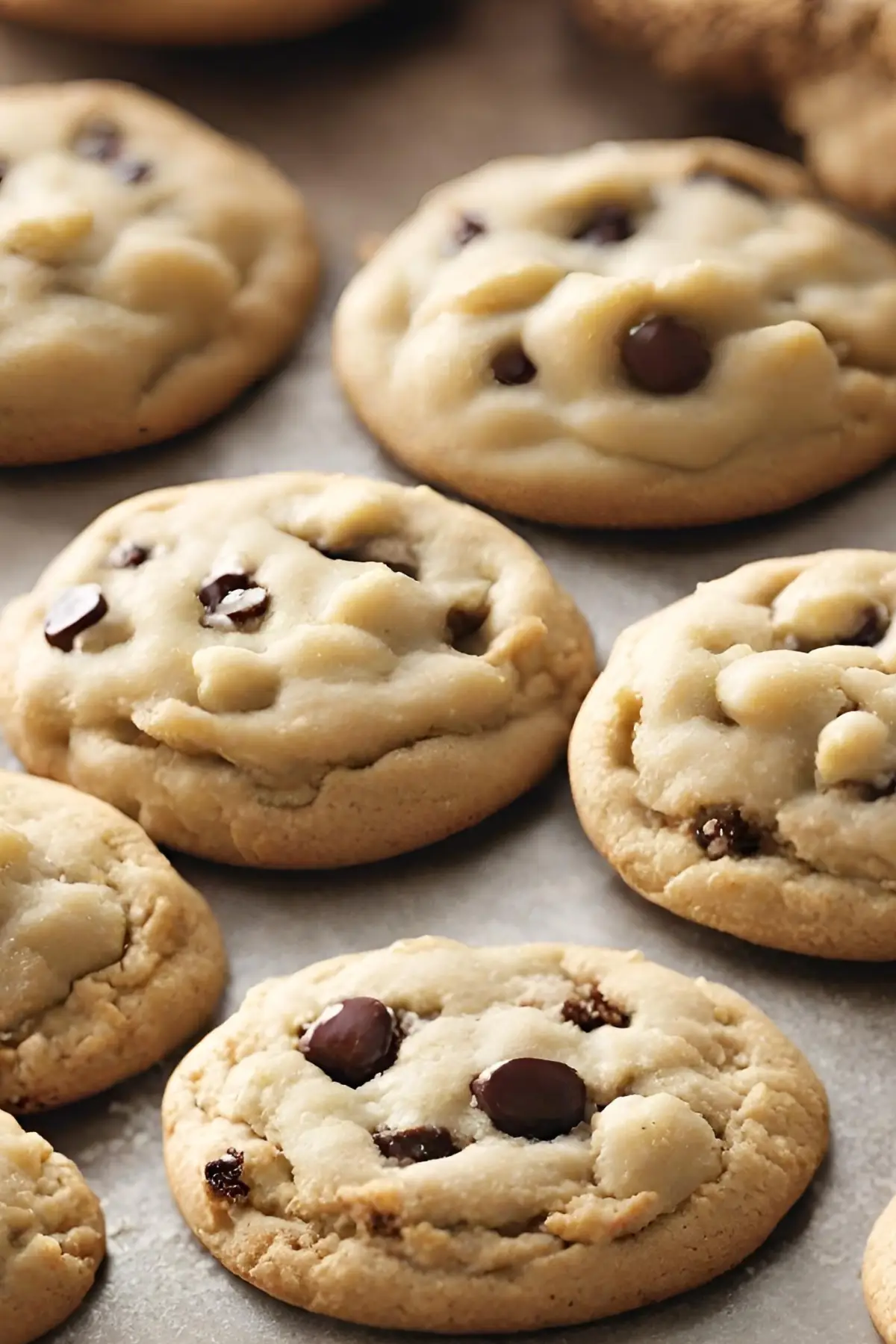The Art of Perfect Cookies: Mastering the 3 1/4 Cups of Flour Recipe
Baking cookies is both an art and a science, requiring precision, patience, and a bit of creativity. Whether you’re a novice baker or a seasoned pro, understanding the nuances of your recipe is key to achieving that perfect batch of cookies. In this comprehensive guide, we delve into the specifics of a cookie recipe that calls for 3 1/4 cups of flour, exploring the role of each ingredient, measurement techniques, and advanced baking tips to ensure your cookies turn out just right.
Decoding the Recipe: 3 1/4 Cups of Flour
Flour is not just an ingredient; it’s the backbone of baking, the very foundation upon which many culinary creations are built, especially when it comes to cookies. It’s the ingredient that gives cookies their structure, ensuring they don’t just fall apart the moment you pick them up. But flour is more than just a structural element; it’s a key player in determining the texture and flavor of the final product. The right flour can turn a good cookie into a great one, making the act of measuring it out not just a step in the recipe, but a crucial decision point in the baking process.
The Science of Flour in Baking
At the heart of flour’s role in baking is gluten, a protein that forms when flour is mixed with water. Gluten is what gives dough its elasticity and strength, and its content in flour can dramatically affect the texture of baked goods. For cookies, the gluten content of the flour determines whether they’ll be chewy, crunchy, or crumbly. All-purpose flour, with its balanced gluten content, is often the go-to choice for cookie recipes because it strikes just the right balance, providing enough structure to hold the cookies together without making them too tough.
Choosing the Right Flour
However, the world of flour is vast and varied, and sometimes a recipe calls for something a bit different to achieve a specific texture or flavor:
-
Cake Flour: Lower in protein than all-purpose flour, cake flour results in a lighter, softer cookie. It’s the secret behind those melt-in-your-mouth textures that make you reach for one more cookie, even when you think you couldn’t possibly eat another.
-
Bread Flour: On the other end of the spectrum, bread flour has a higher gluten content, which can lead to chewier cookies. If you’re aiming for a cookie that gives a satisfying resistance when you bite into it, bread flour might be your ally.
-
Whole Wheat Flour: For those seeking a more robust flavor and a hint of nuttiness, whole wheat flour is a great option. It also adds a bit of extra fiber, making your cookies just a tad healthier (or at least making you feel better about eating them).
Mastering the Measure
When it comes to measuring flour, precision is key. Too much flour and your cookies could end up dry and crumbly; too little, and they might spread too much or not hold together. A kitchen scale is the baker’s best friend here, ensuring that you get exactly the right amount of flour every time. If you’re using measuring cups, the spoon-and-level method (spooning flour into the measuring cup and leveling it off with a knife, without packing it down) is the next best thing to ensure you don’t inadvertently add too much.
Expanding Your Flour Knowledge
For those looking to dive deeper into the art of choosing and using flour in baking, resources like King Arthur Baking’s Expert Baking Guides offer a wealth of information. From detailed discussions on the properties of different types of flour to tips on adjusting recipes and techniques based on the flour you’re using, these guides are an invaluable resource for anyone looking to elevate their baking.
Understanding flour’s role in baking is about more than just following a recipe; it’s about grasping the science and art behind what makes baked goods work. By choosing the right flour and measuring it accurately, you’re not just making cookies—you’re crafting experiences, memories, and perhaps most importantly, delicious treats that bring joy with every bite.
Measuring Flour Accurately
The precision with which you measure flour can significantly influence the outcome of your cookie recipes. Flour, being a foundational ingredient, requires careful handling to ensure your cookies have the desired texture and consistency. Below, we delve into the best techniques for measuring flour and highlight some common pitfalls to avoid.
The Spoon and Level Method
This technique is widely recommended for measuring flour without a scale. It involves using a spoon to scoop flour into your measuring cup until it’s heaped above the rim. Then, you take the flat edge of a knife or a straight-edge spatula and level off the excess flour. This method helps in preventing the flour from being packed down as it would be if you scooped it out directly with the measuring cup. The result is a more accurate, lighter measure of flour that aligns with what most recipes intend.
Weighing Flour for Precision
For those who seek the utmost precision in baking, weighing your flour is the way to go. This method eliminates the guesswork and variability that come with volume measurements. For instance, 3 1/4 cups of all-purpose flour is generally equivalent to about 406 grams. Having a kitchen scale allows you to measure the exact amount needed for your recipe, leading to consistent results every time.
Avoiding Common Measurement Mistakes
Several common mistakes can lead to inaccurate flour measurements, which in turn can affect the texture and structure of your cookies:
-
Packing Flour into the Cup: When you pack flour into the measuring cup, you end up with more flour than the recipe calls for. This can make your cookies dry or overly dense.
-
Scooping Directly from the Bag: Using the measuring cup to scoop flour directly from the bag compacts the flour due to the scooping motion. This again results in more flour than needed and can lead to dry, crumbly cookies.
To avoid these pitfalls, stick to the spoon and level method or, better yet, weigh your flour whenever possible.
Further Exploration
For those interested in expanding their baking skills and knowledge about accurate measuring techniques, platforms like Food52 offer a treasure trove of creative baking tips. These resources delve into not just the hows but also the whys of baking techniques, providing a deeper understanding that can help you adapt and innovate in your baking endeavors.
Accurate flour measurement is more than a step in baking; it’s a skill that, once mastered, can significantly elevate the quality of your baked goods. Whether you’re a novice baker or a seasoned pro, taking the time to measure flour correctly can make all the difference in achieving that perfect batch of cookies.
Other Key Ingredients in Cookie Recipes
In the world of baking, cookies hold a special place, beloved for their variety, simplicity, and the comfort they bring. But even the simplest cookie recipe is a complex balance of ingredients, each serving a specific purpose. By understanding the role of each key ingredient, you can make informed decisions to tweak recipes to your liking, troubleshoot issues, or even create your own recipes from scratch. Here’s a look at some of the cornerstone ingredients in cookie recipes and how they contribute to the final product.
Sugar: Sweetness and Texture
Sugar does far more than just sweeten cookies; it’s integral to their texture and color. White sugar helps cookies spread out and can give them a crisp edge. Brown sugar, on the other hand, contains molasses, which adds moisture and results in a denser, chewier texture. The choice between white, brown, or a combination of both sugars can dramatically alter your cookie’s texture and flavor profile.
Eggs: Binding and Moisture
Eggs are crucial for binding the ingredients together, ensuring that your cookies don’t crumble apart at the slightest touch. They also add moisture, contributing to a tender texture. The fat in the yolks adds richness, while the protein helps give structure. Altering the number of eggs, or parts of the egg used (such as using only yolks for richness or whites for lightness), can modify the cookie’s density and texture.
Butter: Flavor and Texture
Butter is key to the rich, unmistakable flavor of classic cookies. It also plays a significant role in texture; the process of creaming butter with sugar introduces air into the dough, contributing to a lighter texture. Butter can be substituted with oils or margarine, but these changes can affect both flavor and texture. Oils might make cookies more cake-like, while margarine can affect the flavor subtly.
Leavening Agents: Rise and Texture
Leavening agents like baking soda or baking powder are essential for adding lift to cookies. Baking soda (sodium bicarbonate) reacts with acidic ingredients in the dough (like brown sugar or honey) to create carbon dioxide gas, which helps cookies rise and become light and porous. Baking powder contains baking soda along with an acid, so it doesn’t need an acidic ingredient to work. The choice between these can affect the spread and rise of your cookies, with baking soda typically leading to a crisper texture, while baking powder can produce a lighter, cakier cookie.
Mastering the Ingredients
Understanding these ingredients’ roles allows bakers to experiment with confidence. Want chewier cookies? Consider more brown sugar. Looking for a cake-like texture? Perhaps increase the eggs or switch to baking powder. The beauty of baking is in the flexibility and creativity it affords. By mastering the functions of these key ingredients, you open up a world of possibilities in your baking endeavors, enabling you to adjust recipes to suit your tastes or even invent new ones. Each ingredient is a tool in your baking arsenal, ready to help you craft the perfect cookie.
Advanced Baking Tips
Baking the perfect cookie is an art that balances science and intuition. Whether you’re aiming for chewy centers, crisp edges, or a particular flavor profile, a few advanced tips can help refine your technique and elevate your results. Here are some strategies to consider that go beyond the basics:
Achieving Texture Perfection
-
For Chewier Cookies: The key to a chewier texture lies in the sugar composition. Increasing the amount of brown sugar in your recipe can lead to moister, denser cookies. Brown sugar contains molasses, which adds moisture and retains it during baking, contributing to that coveted chewy texture.
-
For Crispier Cookies: If a crispier texture is what you’re after, consider adjusting the baking time and temperature. Slightly increasing the baking time allows the cookies to lose more moisture, resulting in a crisper texture. However, keep an eye on them to avoid burning. Additionally, playing with the sugar type can influence texture; white sugar tends to spread more, contributing to a crispier edge.
Adjusting for Altitude
Baking at high altitudes can be challenging due to the lower air pressure, which affects the rise of baked goods and can speed up the evaporation of liquids. Here are some adjustments to consider:
- Leavening Agents: You may need to decrease the amount of baking soda or baking powder to prevent cookies from rising too quickly and then falling flat.
- Liquids: Increasing liquid ingredients slightly can compensate for quicker evaporation at higher altitudes, helping to maintain the dough’s moisture.
Scaling Recipes Up or Down
Whether you’re baking for a crowd or just a few, adjusting your cookie recipe’s size requires careful calculation to maintain the balance of ingredients.
-
Proportionate Adjustments: The key to scaling recipes is keeping the ingredient ratios consistent. If you’re doubling a recipe, ensure that every ingredient is doubled to maintain the original texture and flavor profiles. This includes not just the flour and sugar, but also the leavening agents, fats, and liquids.
-
Challenges to Consider: When scaling up, be mindful of your mixer’s capacity; mixing too much dough at once can strain your equipment and lead to uneven mixing. Additionally, consider your oven space. Overcrowding the oven can lead to uneven baking. You may need to bake in batches to ensure each cookie turns out perfectly.
Advanced Baking Considerations
These advanced tips can help you navigate the nuances of cookie baking, allowing you to tweak recipes with confidence for the desired outcome. Remember, baking is as much about the journey as it is about the destination. Experimentation and adjustment are part of the process, enabling you to develop your unique baking style and signature cookies that are sure to impress.
Common Baking Problems and Solutions
Baking is both an art and a science, which means that even small deviations from a recipe or technique can lead to less-than-desirable results. However, understanding common baking problems and knowing how to fix them can turn these challenges into opportunities for learning and improvement. Here are some solutions to typical issues that might arise while baking cookies, along with answers to frequently asked questions that can help ensure your next batch is perfect.
Problem: Spreading Cookies
Solution: If your cookies are spreading too much in the oven, chilling the dough before baking can help. Cold dough takes longer to melt in the oven, which reduces spreading. Additionally, check your recipe’s butter content; too much butter can lead to excessive spreading.
Problem: Tough Cookies
Solution: Toughness in cookies is often a result of over-mixing the dough, which develops the gluten too much. To avoid this, mix your dough just until the ingredients are combined. Also, be mindful of the flour type and measurement; too much flour can contribute to a tougher texture.
FAQs
Can I substitute whole wheat flour for all-purpose flour?
Answer: Yes, you can substitute whole wheat flour for all-purpose flour, but keep in mind that it will affect the texture and taste of your cookies. Whole wheat flour has a higher protein content and more fiber, which can make your cookies denser and give them a nuttier flavor. You might want to start with a half-and-half mix of whole wheat and all-purpose flours to balance the texture.
How do I make my cookies softer?
Answer: To achieve softer cookies, consider adding a bit more brown sugar to your recipe. Brown sugar contains molasses, which adds moisture and helps retain it during baking. Another tip is to underbake your cookies slightly; removing them from the oven when they are just set but still soft in the center can result in a softer texture as they cool.
Why did my cookies turn out flat?
Answer: Cookies can turn out flat for several reasons, including melted butter, over-mixing the dough, or using expired leavening agents. Ensure your butter is at room temperature but not melted when creaming it with sugar, as melted butter can cause the dough to spread too much. Additionally, check the expiration dates on your baking soda or powder; expired leavening agents lose their effectiveness and won’t produce the necessary rise.
Final Thoughts
Encountering issues in baking can be frustrating, but each problem also serves as a learning opportunity. By understanding common pitfalls and knowing how to address them, you can improve your baking skills and achieve better results with each batch of cookies you bake. Remember, the key to successful baking lies in precision, patience, and the willingness to experiment and adjust.
In conclusion, mastering the art of cookie baking, especially when a recipe calls for 3 1/4 cups of flour, involves understanding the role of each ingredient, measuring accurately, and being aware of how slight variations can affect the outcome. With these tips and techniques, you’re well on your way to baking the perfect batch of cookies every time. Happy baking!
- For those interested in exploring different types of cookie recipes, check out the Delicious Cinnamon Roll Cookies Recipe, which offers a unique twist on traditional cookie flavors.
- If you’re looking for more baking inspiration, the Can Cooker Recipes section provides a variety of creative ideas to try in your kitchen.
3 1/4 Cups Flour Cookies: Ultimate Guide to Perfect Baking
- Total Time: ~1 hour
- Yield: 24 cookies 1x
- Diet: Vegetarian
Description
This ultimate guide to perfect baking focuses on creating delightful cookies using 3 1/4 cups of all-purpose flour as the base. Designed for both novice and experienced bakers, it walks you through each step to achieve cookies that boast the perfect balance of chewiness and crispness.
Ingredients
- 3 1/4 cups all-purpose flour
- 1 teaspoon baking soda
- 1/2 teaspoon salt
- 1 cup (2 sticks) unsalted butter, room temperature
- 1 cup brown sugar, packed
- 1/2 cup granulated sugar
- 2 large eggs
- 2 teaspoons vanilla extract
- 2 cups chocolate chips or chunks
Instructions
- Whisk together flour, baking soda, and salt in a bowl. Set aside.
- In a large bowl, cream together butter, brown sugar, and granulated sugar until light and fluffy.
- Beat in eggs one at a time, then stir in vanilla.
- Gradually blend in the dry ingredients until just combined. Fold in chocolate chips.
- Chill dough for 30 minutes. Preheat oven to 350°F (175°C).
- Drop spoonfuls of dough onto baking sheets. Bake for 10-12 minutes, until golden.
- Let cool on baking sheets for 5 minutes, then transfer to wire racks to cool completely.
Notes
- Chilling the dough helps control spreading and enhances flavor.
- Substitute chocolate chips with nuts or dried fruit for variation.
- Use parchment paper on baking sheets for easy cleanup.
- Prep Time: 15 minutes + 30 minutes chilling
- Cook Time: 12 minutes
- Category: Dessert
- Method: Baking
- Cuisine: American
Nutrition
- Serving Size: per cookie
- Calories: 210
- Sugar: 18g
- Sodium: 150mg
- Fat: 11g
- Saturated Fat: 6g
- Carbohydrates: 29g
- Fiber: 1g
- Protein: 3g
- Cholesterol: 35mg

